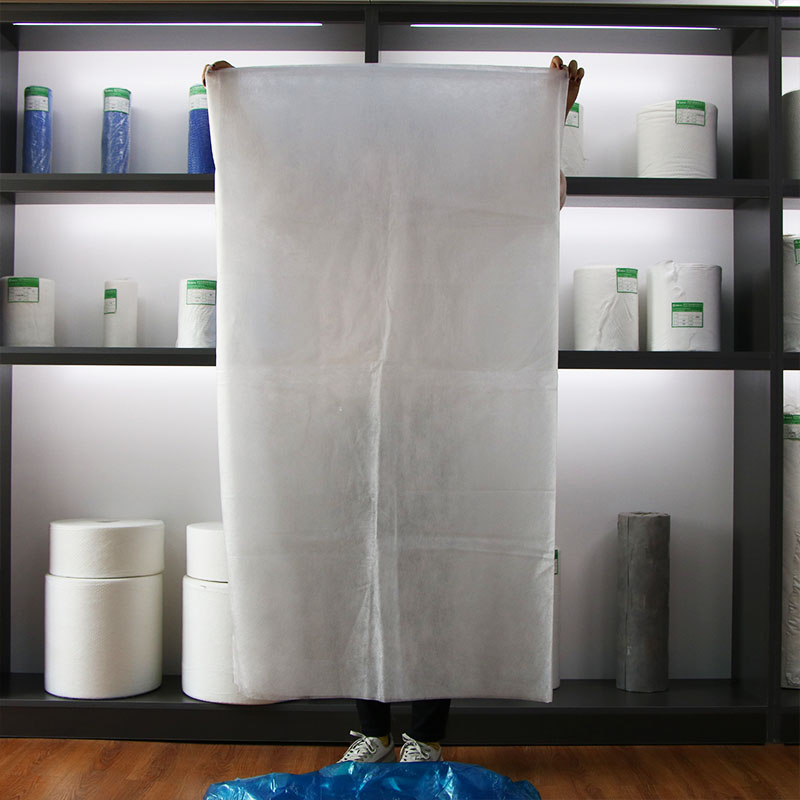Non-Woven Fabrics And Their Uses In Agriculture
Non-woven fabric is a result of the earliest stages of the petroleum industry. Non-woven fabric was used primarily because of their bulk, softness and their ability to be packaged easily, covering, and filling. With the rapid growth of material science, the application scope of non-woven fabrics has expanded to a wide range of areas of commerce and industry civil engineering and medical treatment, agriculture and environmental engineering. The existence of non-woven fabrics is apparent everywhere, with a particular emphasis on its early applications in the agricultural sector. Non-woven fabric is a type of fabric made from short fibers and long fibers that are bonded together using chemical, heat or mechanical treatment. In general, non-woven materials are less durable and more resilient than woven fabrics. There are many other non-woven materials. Non-woven fabric is utilized in a variety of industries. They are much easier to make than woven fabrics, and there is a growing market for non-woven materials. See this pp agricultural nonwoven fabric for more info.
Non-Woven Industries development. Nonwoven fabrics are a product that emerged from the petrochemical and plastics industries following the introduction of film. It weighs less than plastic cloth and offers greater ventilation. It is used frequently in medical and sanitary items like facial towels, sanitary napkins, filters, and so on. Then it was created and used in engineering. Non-woven fabric protects the crops of vegetables from damage from cold. Non-woven fabric is made in a different way from plastic films. However, the basic components that are used in their production are nearly identical. This is the case with polyvinyl chloride (PVC), PE (polyethylene), EVA copolymer (Ethylene Vinyl Acetate), PVA/polyvinyl alcoholand many more. It is possible to make a thin film of traditional plastic by melting it and inflating. Basically, the film is continuous; the material extends indefinitely. The surface of the film has no pores. It is completely inert and completely blocks any movement and exchange of molecules. After the growth of the textile sector, artificial chemical fibres made from the above-mentioned ingredients became the new darlings of the textile business. They are transformed into cloth using traditional weft and warp weaving. The non-woven material is made by interconnecting fibers in the same plane, at various angles in all directions. It is not possible to make use of traditional methods of warp and weave. It is more robust than traditional woven fabrics and is made of raw materials in a single day. It is less expensive than traditional weaving, which requires drawing fibers into yarn and then weaving. Recent years have seen a wide range of non-woven fabrics being used in the clothing industry. Due to the advances in material science, and the advancement and implementation of production technology nonwoven fabrics are becoming more diverse and are employed more frequently. You can find the various products and materials in every day life. The growth in non-woven material use in the field of agriculture is due to its lightness, ease-of-production diversification, cost efficiency, and broad range of applications. Check out this non woven landscape fabric for more information.

Non-woven Fabrics in Agriculture. Non-woven textiles were introduced to the agriculture in Europe in the year 1978. They are used to keep carrots warm in the beginning of harvesting, and to protect against the ravages of whiteflies and tomato leaf virus. Non-woven fabrics in the United States are used for mulching cantaloupes sweet peppers, tomatoes and root vegetables. It is used to preserve heat and for early harvesting. Non-woven fabrics are typically used to cover surfaces like grass-proof mats. In order to ensure that roots fully absorb water, short fibers can also be used to make blankets that are water-absorbing. They can also be used as the ground medium for the production of turf. They can also be utilized as plant bags for large trees, such as garden trees and fruit trees. Non-woven fabric can also be employed as crop cover in Taiwan. Non-woven fabrics are used extensively in large greenhouses to aid in energy conservation and environmental control. Canopy curtains have two layers and help reduce heat absorption and radiation at night. TAVIK fabrics are non-woven, spun-bonded non-woven TAVIK fabric with high densities were first used for shading and protecting cauliflower bulbs. Due to its excellent shading capacity, lower thermal conductivity and easy recyclability, it was quickly adopted by farmers. It was eventually used to preserve and keep leaf vegetables safe from insects and shade the trees and fruit trees. Because of the unique climate and ecosystem of Taiwan and climate, the growth of the industry of nonwovens is slow. The nonwoven fabric producers in Taiwan keep innovating nonwoven technology. This is a case of water absorption, air permeability as well as water repellency. It has increased its research in order to enhance its capability to store and preserve agricultural products and hopes that it can develop new applications. See this agriculture non woven fabric manufacturer for advice.
